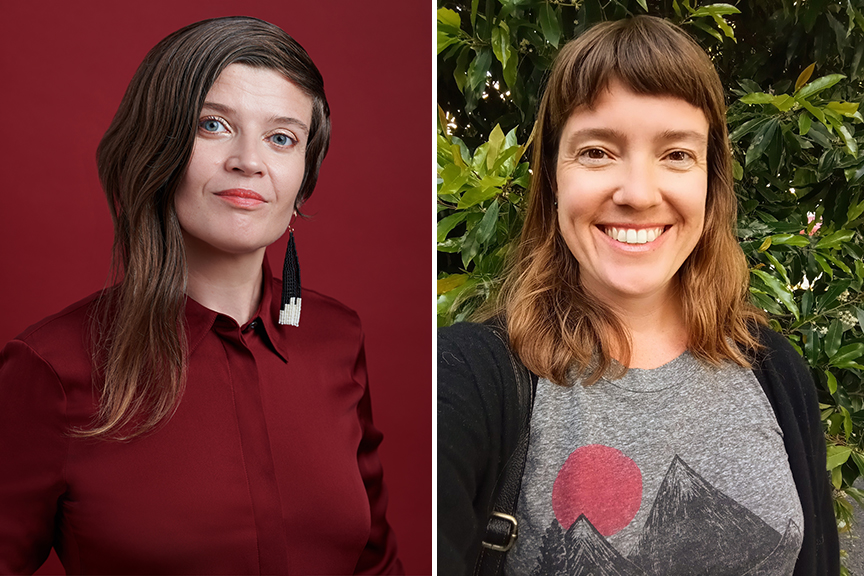
Dorota Biczel, recent part-time faculty in art history at the University of Houston, and Jessica Santone, associate professor of art history and visual studies at California State University in East Bay), will be in residence at the University of Nebraska–Lincoln’s School of Art, Art History & Design for the 2022-2023 academic year as postdoctoral fellows.
Their positions are funded by a grant supplement of $200,000 from the National Science Foundation, which allows them to join Assistant Professor of Art History Katie Anania and Cooper Stiglitz, a Master of Arts candidate in art history, in a consortium at Nebraska called Art, Data and Environment/s (ADE/s). This grant is the only NSF grant supplement of its kind to support arts and humanities research.
ADE/s is a component of a larger project, "From Ecosystems to Evolution," which is funded by an EPSCoR grant from the National Science Foundation. "From Ecosystems to Evolution" centers on ecological stoichiometry, or the study of changing chemical elements within ecosystems. Scientists at six U.S. universities are conducting a large-scale study of industrial runoff, pesticides, fertilizers, and other substances and their effects on lakes, rivers, and streams. Over the next two years, they will build a nationwide database for sharing their work. Since each participant uses different methods of data visualization in their research, they have begun collaborating with art historians in ADE/s to develop new ways to visualize their combined data in graphical form.
“ADE/s started in 2021 by pairing scientists with artists and art historians to help make scientific research more visually accessible," Anania said. "Over the last year, this effort has evolved to address broader questions about how scientific knowledge is communicated. Whose voices are historically left out? Who has access to, and command over, scientific knowledge? And how can we do science differently using a humanities framework?"
During the 2022-2023 academic year, the ADE/s team will organize short, guided workshops on art history and ecology, focusing especially on how art history might be applied to create new futures for data visualization. Biczel and Santone will also design an activity for the Conference on Biological Stoichiometry to be held at UNL in March 2023.
“I began teaching about contemporary art and climate justice under the orange skies of fire season in the San Francisco Bay Area in 2020, and I'm excited to be here now to develop research with the ADE/s project related to art's capacity to expand ways of knowing and to deepen communication with the public,” Santone said.
The work of Biczel, Santone, Anania and Stiglitz is meant to challenge Western scientific models that are commonly used to visualize data—such as the Cartesian x-y axis found in many graphs and charts—and instead considers how tools, performances or activist practices might communicate scientific principles. Using works of art and design outside the Western canon, the project will support a more diverse, justice-centered approach to ecology.
“I am thrilled to be joining the School of Art, Art History & Design at UNL as a postdoctoral fellow in art history and ecology with the ADE/s consortium,” Biczel said. “With my research and epistemic framework articulated from the so-called Global South, I have both witnessed and examined destructive effects that the construction of scientific knowledge can have on human, other-than-human and planetary subjects. It is a privilege to be joining a diverse group of scholars deeply invested in shifting the terms on which ecological knowledge is conceived and communicated, to whom and why. We have a truly unique opportunity to work towards ecology that is more holistic, inclusive and justice-oriented.”